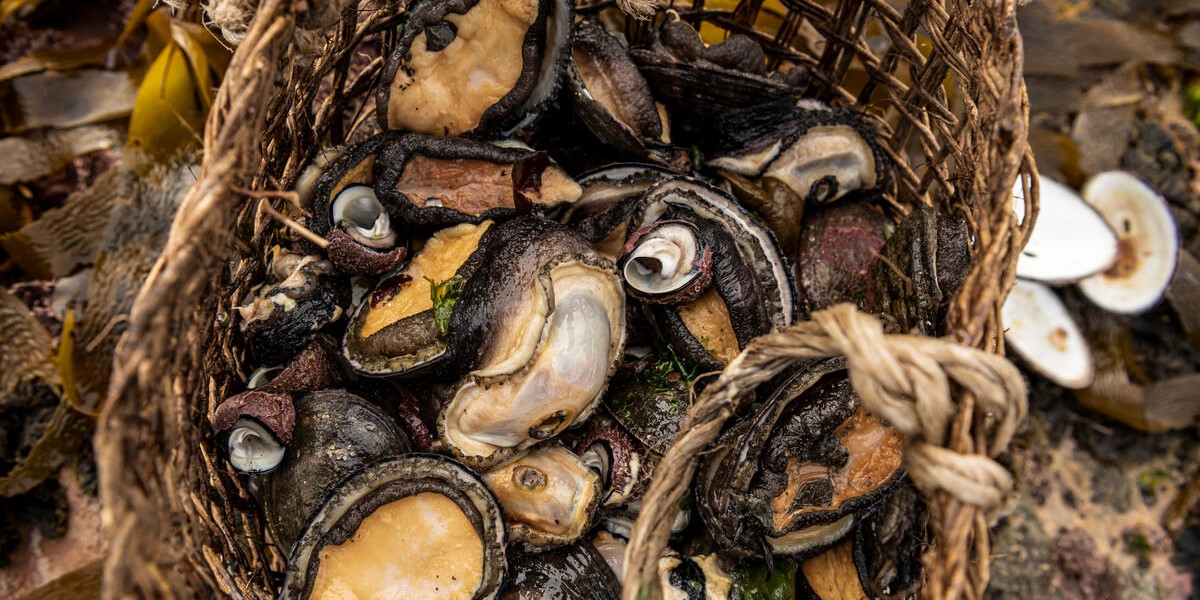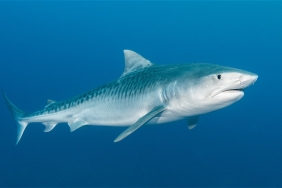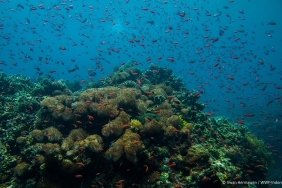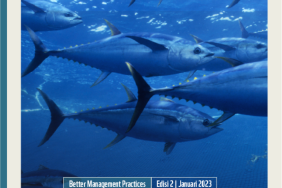DEVELOPING RESPONSIBLE ABALONE FARMING
by Nur Ahyani
Abalone farming in Indonesia has high potential, although it is still under development. The abalone species that have been successfully cultivated are Haliotis squamata and H. asinina. Both are abalone native to Indonesian waters. The cultivation of these two species of abalone is one way to provide abalone products after the capture of abalone from nature decreases. The potential for abalone development in Indonesia is very high because the food needs of abalone as herbivorous organisms can be met throughout the year from the cultivation of Gracilaria sp. in ponds. Abalone farming can also be integrated with fish farming or seaweed farming, thereby increasing the income of farmers.
Located at the WWF-Bali Office, September 13, 2014, WWF-Indonesia Aquaculture Program held the first review of sustainable fisheries practice guidelines or better management practices (BMP) for Abalone aquaculture. This study is part of the BMP development process to obtain input from relevant external parties, consisting of abalone aquaculture experts and also from academics. Among them was Prof. Dwi Eny Djoko Setyono, a researcher from LIPI-Jakarta who has been studying abalone biology and reproduction and abalone farming techniques in Indonesia for more than 10 years. Also present were Ibnu Rusi and I Gusti Ngurah Permana from the Center for Marine Aquaculture Research and Development (BBPPBL)-Gondol, both researchers who have successfully developed abalone cultivation technology, both for hatcheries and enlargement. Representatives from Government Research Institutions were complemented by the presence of Hery Setyabudhi from BPBL-Lombok who has one of the tasks to disseminate abalone farming technology to the community. Input for improvement of the draft BMPs was also obtained from Prof. Ricky Gimin from Cendana University, Kupang as an expert on mollusca and also I Ketut Purianta from the Bali Provincial Marine and Fisheries Office.
Although the potential for cultivation is high, seeds have been successfully produced, and enlargement technology already exists, abalone production is constrained by marketing administrative issues. The market for abalone is overseas markets such as China, Japan, European countries and the United States where export documents are required. Another constraint is the long rearing period, which for H. squamata takes about 8 months from the seed size of 2.5 cm to reach the consumption size (5.5-7 cm). An integrated farming model with other commodities as mentioned above, i.e. kotoni seaweed, grouper fish cages, is one way to overcome this long rearing period.
WWF-Indonesia has developed abalone aquaculture BMPs with the aim that they can be used as a guide for small and medium-scale farmers to conduct responsible abalone aquaculture. Once marketing issues have been resolved and abalone farming is thriving in Indonesia, farmers can use the BMP guidelines to ensure that farming is accountable and environmentally friendly.





